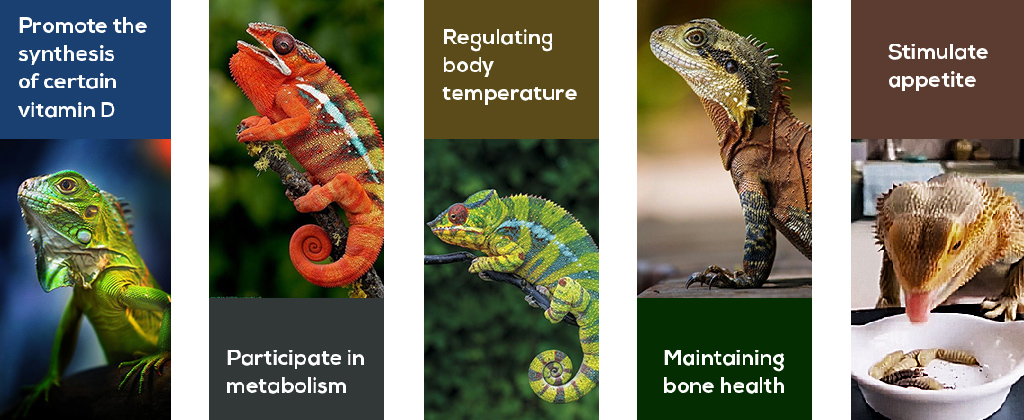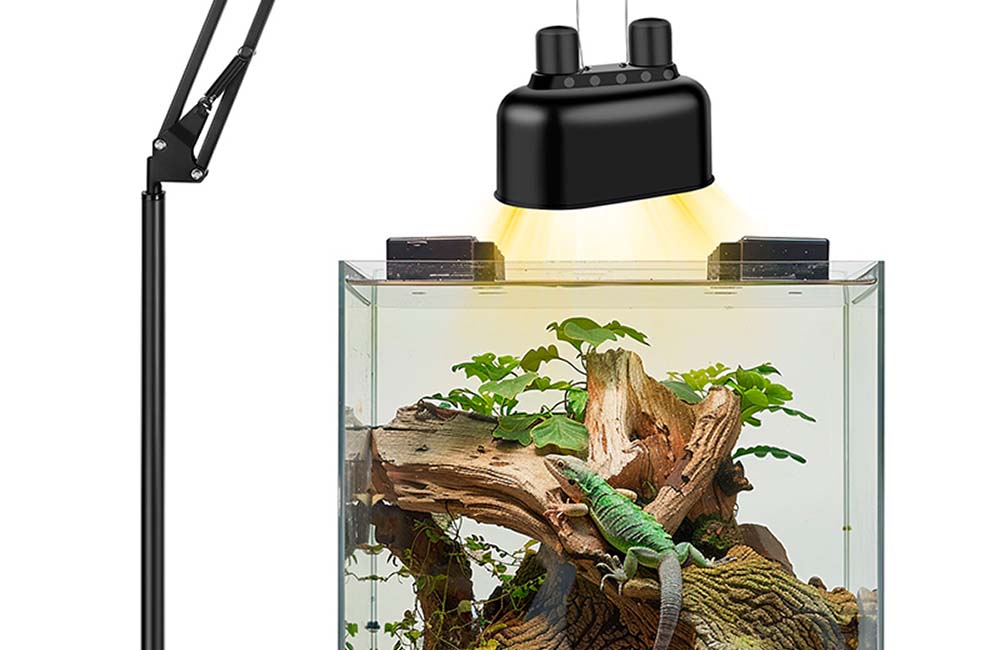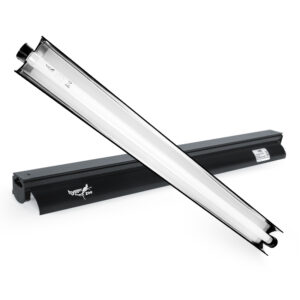It’s important to understand UVA, UVB, and UVC lighting types for the best care of the reptiles during that care. Reptile health depends on these ultraviolet light types, and they affect the metabolism, behavior, and well-being of a reptile. Reptile UVB lights are specially created to simulate sunlight so that reptiles can create the vitamin D3 they will need for calcium absorption and bone health.
Content Table
In this article, we discuss the difference between UVA, UVB, and UVC, why you need reptile UVB lights, and the best products that you should consider for reptile lighting using hygger zoo products.

What is UVB
What Is UVA, UVB, and UVC?
UVA (Ultraviolet A)
Ultraviolet lights have a wavelength longer than others; the longest wavelength is UVA rays (320–400 nm) among ultraviolet rays. Reptiles are influenced by them because they play a major role in forcing reptiles to act upon food while mating. Natural behavior and well-being of captive reptiles are reliant on UVA lighting.
UVB (Ultraviolet B)
UVB rays (280–320 nm) are of medium wavelength and are important for reptile vitamin D3 synthesis. Reptiles can absorb calcium by virtue of vitamin D3, which has earned its name ‘preventer of metabolic bone disease‘. Reptiles need appropriate UVB exposure if they are to stay healthy. It is imperative for the reptiles that naturally bask in the sun to have UVB lighting.
UVC (Ultraviolet C)
The shortest wavelength of these rays is 100–280 nm and is harmful to living organisms. The uses of these devices are generally for sterilizing and disinfection purposes. UVC rays should never be emitted by reptile lights as they can harm reptiles’ skin as well as their eyes.
The Basic Components of a Reptile Light
What is Reptile UVB Light?
This is because reptile UVB lights emit the UVB portion of natural sunlight, which helps reptiles synthesize vitamin D3. These lights are important for the health of reptiles and necessitate UVB for good bone development and metabolic functionality.
Parts of a Reptile Light
- UVB Bulb
This UVB bulb emits UVB radiation that is necessary for reptile synthesis of vitamin D3 so that calcium can be properly absorbed and does not develop metabolic bone disease. hygger Zoo UVB Bulbs (HZ006) are specially designed to give your reptiles perfect, consistent UVB exposure that is energy-saving, long-lasting, and stable lighting output. These bulbs are intended for use in the healthy growth and strong bone development of various reptile species.
- Light Bracket
The Light Bracket supports and positions the bulb at the correct distance from the reptile habitat. The hygger Zoo Reptile Light Bracket (HZ005) is for secure mounting and to distribute UVB optimally. Positive reptile health depends on proper positioning that will neither overexpose nor underexpose reptiles to exposure to UVB rays. It is also adjustable and can be adjusted depending on the species you have, as it will suit the species you find more.
- Reflector
Enhances the intensity and direction of UVB rays to increase the intensity of light the reptile receives. The high-quality reflector optimizes UVB penetration while reducing energy usage to provide the most optimal lighting conditions. It is an essential component because this creates the reptile’s environment, for which they require high UVB levels, simulating the natural basking environment.
- Ballast
Powers fluorescent bulbs like T5 UVB tubes provide a stable light output. Reliable ballast will not cause flickering, which can cause stress to reptiles. Besides that, it also prolongs the lifespan of the bulbs through its constant power regulation, making it a vital component for creating a well-functioning, long-term reptile lighting project.

What is UVB light for reptiles
How Do Reptile Lights Produce UVB?
Specialized UVB fluorescent or LED bulbs are used in reptile UVB lights to produce UVB rays. T5 UVB bulbs are fluorescent tubes that use an electrical current to excite mercury vapor in a phosphor coating, releasing UV radiation that emits UVB light. The hygger Zoo LED UVB Bulbs (HZ006) are LED UVB lights that use semiconductor materials to generate UVB wavelengths directly, thus being energy efficient and long-lasting.
The hygger Zoo Reptile Light Bracket (HZ005) helps keep the right positioning, including proper distance and fixture for effective UVB exposure.
The Relationship of Light and UVB Index
The UVB index measures the intensity of UVB radiation emitted by a light source. It is essential to match the UVB index to the needs of specific reptile species. For example:
- Low UVB Index (2.0–5.0): Suitable for forest or shade-dwelling reptiles.
- Medium UVB Index (5.0–7.0): Ideal for partial sun basking reptiles.
- High UVB Index (7.0–10.0): Required for sun-loving desert species.
The Hygger Zoo LED UVB Bulbs provide stable UVB output that meets the medium UVB index requirements of different reptile species.
How to Tell If the Reptile Light Contains UVB
1. UVB Meter
The most accurate method. The UVB output is expressed in microwatts per square centimeter (µW/cm²) on a UVB meter. A UVB meter that is regularly used to track how well the lifestyle bulbs perform helps to guarantee that reptiles continue to get the appropriate UVB levels so that vitamin D3 synthesis and bone health continue to be maintained.
2. Manufacturer Specifications
Always check the product details. hygger zoo is a reliable manufacturers that provide all the specifications available for UVB output. Pet owners can select the right reptile lighting by viewing the UVB output levels on the hygger zoo shop.
3. Reptile Health Monitoring
An indicator of proper UVB lighting is healthy behavior such as active basking, appropriate feeding, and regular shedding. UVB deficiency can be ascertained by signs of lethargy, weak bones, or lack of appetite, which may prompt a replacement or adjustment of the source of UVB. But regular veterinary check-ups may also help detect any problems with UVB-related health conditions.
4. Visual Inspection
If the bulb is providing proper brightness and heat, this means it is functional, although UVB light is invisible to the human eye. You should also make sure that the bulb is placed at a suitable distance away by using suitable fixtures such as the Reptile Light Bracket (HZ005). Bulbs and reflectors must be frequently cleaned, as this can reduce UVB output to the bulbs due to dust accumulation.

What is a UVB light
How Long Do T5 UVB Bulbs Last?
T5 UVB bulbs typically last 6 to 12 months, depending on usage and light quality. Over time, UVB output diminishes even if the bulb still emits visible light. For optimal reptile health:
- Replace T5 UVB bulbs every 6–12 months.
- Check UVB levels regularly using a UVB meter.
How Often to Replace T5 UVB Bulbs in a Reptile Tank
Even if the bulb appears to work, its UVB output may decline:
- For High-UVB-Requiring Reptiles (e.g., bearded dragons): Replace every 6 months.
- For Low-UVB-Requiring Reptiles (e.g., geckos): Replace every 9–12 months.
Using the Reptile Light Bracket (HZ005) ensures the bulb remains at the correct distance, prolonging effectiveness.
The Bottom Part
Proper UVB lighting forms a cornerstone of proper reptile care. A basic understanding of the roles of UVA, UVB, and UVC is important for a reptile to undergo healthy development. The hygger Zoo LED UVB Bulbs (HZ006) and Reptile Light Bracket (HZ005) both ensure reliable UVB exposure for reptile UVB lights and make for easy cleanup. Timely bulb replacement, proper distances, and regular maintenance ensure that reptiles get a safe and nurturing environment to thrive as they age.




Leave a comment